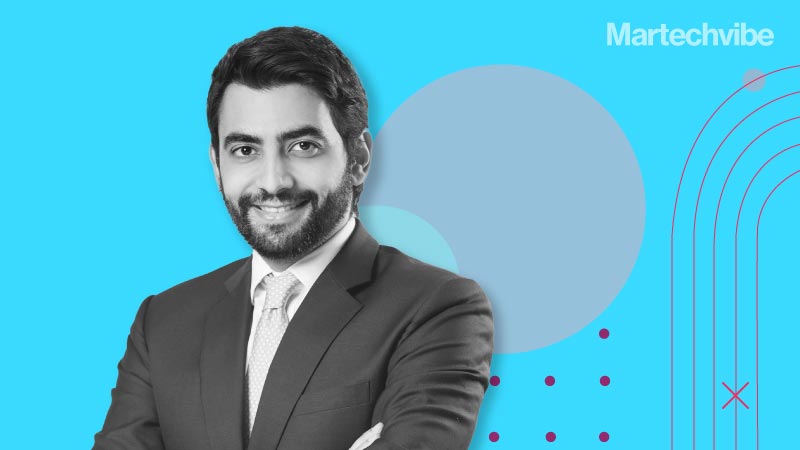RPM, Smart Rooms Are The New Standards Of Care
In the GCC healthcare industry, technological development has helped redefine the doctor-patient relationship, says Rami Zahran “The GCC region is set to see a rise in smart rooms at hospitals to let patients perform routine tasks with ease and improve the patient experience. Through connected systems, process automation, patient entertainment, and education, and timely alerts, […]
Topics

In the GCC healthcare industry, technological development has helped redefine the doctor-patient relationship, says Rami Zahran
“The GCC region is set to see a rise in smart rooms at hospitals to let patients perform routine tasks with ease and improve the patient experience. Through connected systems, process automation, patient entertainment, and education, and timely alerts, healthcare providers can significantly improve patients’ quality, speed, accuracy, and experience while accelerating innovation in the industry,” said Rami Zahran, Group Chief Marketing & Communications Officer (KSA), Saudi German Health.
With 14 years of experience in multinational and regional corporations, Zahran discusses the current state of the healthcare industry – from patient experience and RPM technology to smart room experiences and the role of AI. According to the healthcare leader, rapid technological development has also helped address critical challenges in the sector, helping to transform into a more sustainable one while redefining the doctor-patient relationship.
Excerpts from the interview
How can patients and healthcare companies benefit from remote patient monitoring data technology?
Remote patient monitoring (RPM) is one of the more popular technologies enabling physicians to stay up to date on their patients’ medical conditions daily without the need for constant physical visits. It allows them to provide real-time feedback and advice, which can truly transform the speed at which healthcare is delivered.
RPM’s benefits are even more profound because it offers patients the assurance that someone is diligently monitoring their health and well-being, providing them with a greater level of education, support, and feedback than traditional healthcare models. This technology also benefits healthcare providers as it improves clinical insight into patients’ status, enabling providers to initiate proactive care between office visits. RPM is becoming part of the new standard of care.
Does patient experience impact health outcomes?
The concept of patient satisfaction has evolved over the last decade. Today, patients ask for transparency, empathy, convenience, and integrative health services. Although clinical excellence has always been the goal of healthcare providers, ensuring patient satisfaction has often been an afterthought. A great patient experience connects clinical excellence with patient satisfaction throughout their care journey.
It also relies on teamwork, communication, shared decision-making, empathy, compassion, and human connections. Patient experience can range from digital solutions that offer ease of access to excellent bedside manners.
Efforts committed to improving patient experience reflect in revisit rates of physicians and an increase in word-of-mouth referrals. It’s a win-win situation for both the healthcare institution and the patients, both benefit from a higher level of satisfaction, improved health outcomes, and economic benefits. It is becoming essential for insurance providers to measure the quality of care healthcare organisations provide, reshaping the way contracts are structured between insurers and healthcare providers.
How is technology revolutionising the patient experience?
The healthcare sector continues to evolve rapidly, and it’s hard to deny how much patient experience has improved in terms of accessibility, efficiency, and comfort. Digital solutions have been adopted to improve healthcare services, increase capacity and efficiency, and optimise clinical outcomes. Rapid technological development also helped transform the industry into a more sustainable one while redefining the doctor-patient relationship.
As technology has helped advance the healthcare sector, specific new-age technological trends have gained prominence due to the pandemic. It has been interesting to see patients opting for a digital approach to find and avail of services in a short period, resulting in increased capacity and improved efficiency of medical professionals. This has led healthcare organisations and tech companies to find new ways to provide a positive care experience by offering remote visits, sharing lab results through patient portals, and providing two-way communication between providers, reducing the effort and time spent physically going to the doctor.
How can smart room experiences satisfy patient expectations and optimise caregiving?
Hospitals are dramatically shifting their patient experience by leveraging technology and data in smarter and more innovative ways. The rising trends of IoT technologies and smart devices have paved the way for smart hospital rooms. The introduction of interactive screens, mobile applications with room controls, digital whiteboard signages, and many other tools will increase patient engagement and satisfaction. The whole healthcare system will be connected to the smart rooms and will gradually bring modernised patient experiences. Some patients stay in hospitals for as long as they would stay in hotels, so it’s crucial to offer them similar services they have been accustomed to in the hospitality industry.
The GCC region is set to see a rise in smart rooms at hospitals to let patients perform routine tasks with ease and improve the patient experience. Furthermore, integrated patient rooms that leverage the latest technologies such as IoT are also expected to deliver better care outcomes while ensuring patient satisfaction. Through connected systems, process automation, patient entertainment and education, and timely alerts, healthcare providers can significantly improve patients’ quality, speed, accuracy, and experience while accelerating innovation in the industry.
What are the significant challenges you foresee with the increased use of virtual consultations worldwide? Can AI help improve efficiency?
Remote consultations offer great potential and have many advantages to both the patients and healthcare providers. However, many have expressed their concern regarding these technology-based consultations.
One of the biggest challenges is to ease patients’ concerns about the security and privacy of information being shared digitally. Other challenges are technical, logistical, and even regulatory. For an optimal experience, a healthcare provider must ensure that the technology behind virtual consultations is adequate, the scheduling system and physicians can accommodate virtual visits, and the correct licences are acquired. A further challenge is ensuring physicians can provide proper care to patients by providing a balanced mix between in-person consultations and virtual ones.
Providers need to form strong teams between health professionals, patients, and partners. Targeted efforts must be sought and assessed. A comprehensive understanding of clinicians’ perspectives and the various challenges they face is crucial before adopting virtual care that could help address their concerns and facilitate its adoption.
Artificial intelligence (AI) can be a valuable tool to improve the efficiency of physician schedules between in-person visits vs virtual ones. Furthermore, AI can help improve the utilisation rate of clinics to optimise the flow of patients in the hospital, based on trends and understanding of patients’ needs.
If you liked reading this, you might like our other stories
Mobile Marketing Trends To Watch
Caring for CX — MarTech in Healthcare






